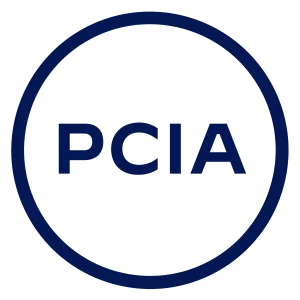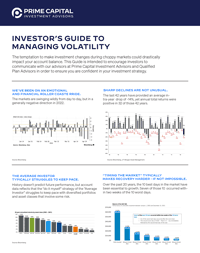Liquidity is an important part of your financial plan. Here’s how you can tailor your assets to your needs!
The three sides of the magic triangle in the financial planning world are growth, protection and liquidity. You probably hear about growth often. It’s those decisions and assets that give you the opportunity to enhance your portfolio and make your funds work for you. That part of your plan may include stocks, bonds and non-traditional assets, all with different levels and possibilities of growth. Then there’s protection, which shields your assets from risk. Many times, an advisor may recommend shifting to a more protective approach as you get closer to retirement, guarding those assets when you need them the most.
Finally, there’s liquidity, which is probably the least talked about of the trio. Still, however, it’s one of the most important components of your comprehensive plan. Liquidity is all about the accessibility of your money. It’s the question of whether you’d be able to access your assets right now if you needed to. If you couldn’t, how long would it take you to convert those assets to liquid cash, or what would be the penalty for accessing them when you need them? That’s how liquidity figures into a financial and retirement plan. Let’s go over the importance of liquidity, as well as a few ways you can tailor it to your needs.
What Are Liquid Assets?
Liquid assets are assets you have access to right now. You would have to jump through very few hoops to get them, and they can essentially be used immediately in a pinch. Some examples of liquid assets include cash in hand, cash in bank deposits, money in cash management accounts, money market investments and more. Oftentimes, stocks, bonds and CDs can also be considered liquid, as you can traditionally access them relatively quickly if you need them.
The benefit of having liquid assets is clear. You have that money right you need it for what you need it for. If you incur an emergency medical bill, that money can be used to cover that expense. It could also be used to cover unexpected home repairs or car repairs. The downside, however, is that liquid assets may provide less in returns than longer-term investments. Cash is the perfect example, as it’s accessible for nearly any case scenario, but cash left in a checking account offers no growth and is easily outpaced by inflation.
What Are Semi-Liquid Assets?
Semi-liquid assets are assets that are accessible but typically come with some sort of rules. Where you might be able to drive to the nearest ATM and get your liquid assets, you might encounter more obstacles when trying to turn semi-liquid assets into cash. Some of those obstacles might include tax penalties, interest or surrender charges.
These typically come with vehicles like 401(k)s, IRAs (traditional and Roth), cash value life insurance policies, annuity products and certificates of deposit. While these can be helpful tools for diversification, it’s crucial to know the rules prior to adding them to your portfolio. They may offer specific benefits, but they may also force you to pay a price to liquify them.
What Are Non-Liquid Assets?
Non-liquid assets, while not entirely impossible to liquify, are the most difficult to convert to cash quickly. In fact, we like to say they would take months, years or precisely the right buyer. At the same time, however, there is no shame in owning non-liquid assets. In fact, some of your largest purchases will probably be non-liquid. They typically include homes, businesses or private investments, but they can also include your art collection, sports memorabilia or classic cars.
All of these might take time, paperwork and legwork to find a buyer for, meaning you can’t count on them to cover emergency expenses. At the same time, they might have the potential to be the most advantageous for your future. If you’re a business owner, the sale of your company may be what propels your retirement. Additionally, paying off your house can detach you from mortgage payments, allowing you to use more of your money the way you want to.
How Much Liquidity Should I Have in the Accumulation Phase?
While there is no perfect liquidity ratio that matches everybody’s plan, circumstances and goals, we do have a few general recommendations for how you may want to distribute your assets in different phases of your life. During the accumulation phase, you may be looking to grow your assets and sock away money for your future. At the same time, you may incur more surprise expenses, meaning you will need more control of your money. That’s why we traditionally advise keeping 40% to 60% of your assets fully liquid.
We also typically recommend keeping 20% to 40% of your assets in semi-liquid vehicles like your workplace retirement accounts or individual retirement accounts. Each person’s situation will be different, however, which is why we always recommend booking a meeting with us to determine the right asset locations for your portfolio.
How Much Liquidity Should I Have in the Distribution Phase?
As you approach retirement and begin making your way through that exciting phase of your life, it becomes more important to have a plan to distribute the wealth you’ve worked so hard to build. You also may have a more concrete plan when you start to live on a fixed income. That’s why we believe it can be a good idea to have a smaller percentage of liquid assets. We typically recommend keeping 20% to 30% of your assets fully liquid.
More important than liquid cash is income, which is why it can also be smart to keep 30% to 40% of your assets semi-liquid, such as easily convertible retirement accounts, cash value life insurance policies, or other vehicles that can be transitioned to cash with minor penalties. Again, however, the best idea is working with a financial professional who understands your goals and can assemble a comprehensive plan for your assets.
We’re ready to help you determine the right amount of liquidity for your circumstances and goals! Give us a call today to take the first step toward designing a portfolio tailored to your retirement dreams. You can reach PCIA Charleston at (843) 743-2926 or PCIA Wichita at (316) 669-9413!
Advisory products and services offered by Investment Adviser Representatives through Prime Capital Investment Advisors, LLC (“PCIA”), a federally registered investment adviser. PCIA: 6201 College Blvd., Suite 150, Overland Park, KS 66211. PCIA doing business as Prime Capital Wealth Management (“PCWM”) and Qualified Plan Advisors (“QPA”). Certain services may be provided by affiliates of PCIA.
042524006 JG





